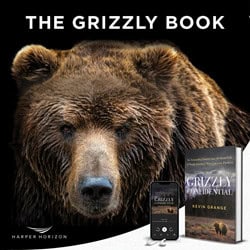Share this article
Wildlife Featured in this article
- black-tailed prairie dog
- mountain plovers
- lark bunting
- sage-grouse
- ferruginous hawk
- badger
- swift fox
When plague wiped out prairie dogs, the entire ecosystem changed
The loss of prairie dogs influenced vegetation and other wildlife
When black-tailed prairie dogs experienced die-offs from sylvatic plague in a Wyoming grassland, it caused changes throughout the ecosystem. Mountain plovers disappeared. Lark buntings increased. Swift fox and ferruginous hawks were nowhere to be seen.
Researchers never would have been able to make these observations if they hadn’t been already studying prairie dogs and other wildlife in the Thunder Basin National Grassland, a vast landscape in northeastern Wyoming where the Great Plains merge with the sagebrush steppe.
In 2017, TWS member Courtney Duchardt, a PhD candidate at the University of Wyoming at the time, had been especially interested in how black-tailed prairie dog (Cynomys ludovicianus) colonies influenced nearby sage-grouse (Centrocercus urophasianus) when she noted some of the colonies were just going quiet.
“If you’ve been on a prairie dog colony, you know they’re not quiet,” said Duchardt, now an assistant professor at Oklahoma State University. “It was weird and eerie.”
She and her colleagues soon realized the reason was a sylvatic plague outbreak.
Since she and her team had already been collecting camera trap and bird point count data, the outbreak offered an opportunity to find out how the resulting prairie dog die-off was affecting other wildlife and the ecosystem as a whole. Her team’s findings from this natural experiment were published in Ecological Applications.

In the two years following the outbreak, they found, the landscape itself changed drastically. “It’s a rare event when you can see something change that quickly,” said Jeffrey Beck, a professor at the University of Wyoming and Duchardt’s advisor at the time. Grasses, which prairie dogs usually mow down, also reaped the benefits from unusually high precipitation at the time and grew taller.
That caused bird communities to shift. Researchers saw fewer mountain plovers (Charadrius montanus), which prefer shorter grass, and more species like lark buntings (Calamospiza melanocorys), which prefer taller vegetation. Point counts during the breeding season showed fewer raptors in the area, like ferruginous hawks (Buteo regalis), which fed on the prairie dog colonies.
After reviewing their camera trap data, Duchardt and her colleagues found the die-off’s effects also reached mesocarnivores. Sightings of badgers (Taxidea taxus) and swift foxes (Vulpes velox) became rarer. Ungulate data was a little harder to decipher, but even their populations changed.
The team doesn’t know entirely what these changes mean for the entire ecosystem. But they do know that with less grassland habitat, there are fewer places for species that prefer tall grass to go when it’s not there. “It’s now fragmented so much that a handful of grasslands—that insurance policy—is now gone,” Duchardt said. “Maybe historically, if some disease had taken out a prairie dog colony, they’d go five miles east and be fine. Now, they may have to go 50 miles across landscapes that may have wind and solar [power facilities] and other human impacts.”
The findings also have implications for livestock managers. Managers may think a year without prairie dogs means it’s time to buy more cattle, since there’s more grass available for them. But that’s not necessarily the case, Duchardt said. It would be hard for ranching operations to respond to plague that quickly, she said, and they wouldn’t necessarily know if it’s going to be a wet year.
“The nature of the middle and western Great Plains is they are always changing,” she said. “If we’re able to track the resources better, we could predict and mitigate more benefits for ranchers.” Research is ongoing to figure out when plague outbreaks are likely to occur.
Ranchers can help with wildlife and grassland conservation through things like bird-friendly beef programs, Duchardt said. “Working in the system collaboratively with stakeholders like private landowners has been a really cool thing,” she said. “That’s the model we need going forward.”
Header Image: A black-tailed prairie dog is on alert in the Thunder Basin National Grassland. Credit: Courtney Duchardt








